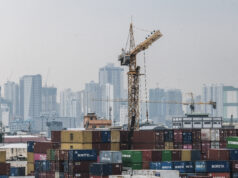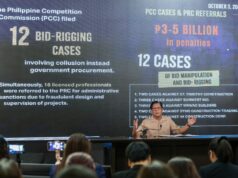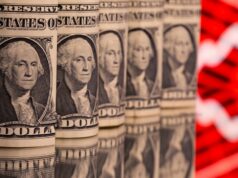Foreign business leaders press government on infrastructure agenda
FOREIGN INVESTORS want the government to pick up the pace on infrastructure development, fearing that President Rodrigo R. Duterte may run out of time to achieve his administration’s plan to spend some P8.44 trillion on this concern by the time he steps down in mid-2022.
“We feel that at the pace we are going and the time we have left for this administration that we may not be able to achieve such an ambitious program,” European Chamber of Commerce of the Philippines (ECCP) President Guenter Taus said in a mobile phone message on Monday.
“We hope that more can be done to get things moving faster in the right direction and the ECCP (is) willing to support the government and its different departments in achieving these goals,” Mr. Taus said.
Mr. Duterte vowed to usher in a “golden age of infrastructure” that will see the construction of badly needed roads, bridges, railways and airports to boost competitiveness.
Under the P8.44-trillion “Build, Build, Build” (BBB) initiative, the government plans to jack up the share of infrastructure spending to 7.4% of gross domestic product (GDP) by 2022 from a programmed 4.7% in 2016.
“We share the view that the program has to go faster under President Duterte than such programs in the past,” John D. Forbes, senior adviser of the American Chamber of Commerce of the Philippines (AmCham), said in a separate text, alluding to the slow rollout of infrastructure projects under the previous administration.
“Many of the flagship projects are still in the feasibility stage, such as bridges over the Pasig (River) due for completion this year.”
Several bills on the new Legislative-Executive Development Advisory Council (LEDAC) list such as the proposed national transport act, government procurement reform act, ease of doing business act and amendments to the build-operate-transfer law should be enacted promptly to support the infrastructure agenda, he said.
“AmCham is optimistic that BBB will improve the country’s infrastructure and it is too early to express disappointment with the pace of flagship infrastructure projects,” Mr. Forbes said, noting that the Department of Public Works and Highways is improving roads and bridges in the provinces “at a much faster pace than a decade ago.”
A report by the ABS-CBN News Channel also quoted Japan Chamber of Commerce and Industry of the Philippines President Hiroshi Shiraishi as saying that the country must “speed up the project” to accelerate infrastructure development, which counts official development assistance (ODA) from Japan as one of the sources of funding.
The Duterte administration prefers the “hybrid” infrastructure financing scheme involving ODA and public funding for the construction phase and then auctioning off the operation and maintenance contracts of these projects to the private sector.
The Philippines has enjoyed rapid economic growth in recent years driven by robust domestic demand, but has trailed other major Southeast Asian nations in terms of foreign direct investment (FDI). Infrastructure development is deemed crucial to boosting job-generating FDIs, which fell 24% to $3 billion in the first five months of 2017 from $3.9 billion a year ago.
“The growth forecasts for the Philippines assume a pickup in government spending as a result of the administration’s infrastructure projects. With a delay (in) infrastructure spending, the economy might not grow as previously anticipated,” Guian Angelo S. Dumalagan, market economist at Land Bank of the Philippines, said via text.
The government targets GDP growth to pick up to 7-8% annually from next year until 2022, from a 6.5-7.5% goal this year, 2016’s actual 6.9% and a 6.2% average in 2010-2015. — Krista Angela M. Montealegre



